7artisans Photoelectric 50mm f0.95 Lens Review:
Lenses with ultra large maximum apertures always have fans, and with good reason: in addition to the light gathering capabilities of these lenses, they can also produce beautifully blurred out backgrounds for when you want to further isolate your subject. In the past, these lenses often came with very high price tags but nowadays, there are quite a few options that are more reasonably priced. Take, for instance, the 7artisans Photoelectric 50mm f0.95 lens, which comes in several different mounts. With a price of just $236, this lens is definitely something that is more attainable. I had the pleasure of testing one out, and here are my thoughts on it.
Thanks for taking the time to read my review! If it helped, please consider purchasing from any of the links mentioned in this post, which in turn, helps support this site. I get a small commission but it will not cost you anything extra. Thank you!
7artisans Photoelectric 50mm f0.95 Lens Build Quality:
I want to start off by talking about the build quality. I am actually very impressed with it. The 50mm f0.95 is all metal, and it feels quite solid in the hands. There’s also a nice hefty feel to it, similar to a rangefinder lens, which I particularly like. In addition, the focus ring is extremely smooth, and has a beautifully dampened feel to it. It has just the right amount of tension, which helps for critical focusing. There’s also a de-clicked type aperture ring, which operates just as smoothly. It has a nice feel as well, and is better for video although I must admit that I wish it was a clicking type. It’s just my preference, and I don’t really do much video anyway. Still, this isn’t a deal breaker to me, especially given that overall, the build is excellent. As I said earlier, the Photoelectric 50mm f0.95 retails for $236 but if I didn’t know the price, I would’ve guess it was much higher. It’s also worth noting that while I tested the Fujifilm version, the 7artisans 50mm f0.95 also comes in Canon EF-M, Micro Four Thirds, Nikon Z, and Sony E mount.
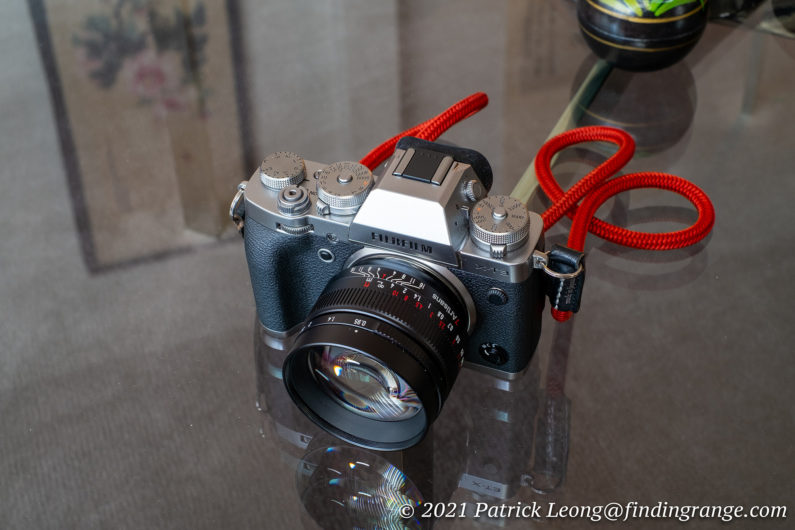
↑ The 7artisans Photoelectric 35mm f0.95 Lens attached to the Fuji X-T3.
With such a large maximum aperture, and focal length of 50mm (75mm equivalent), one would think that this lens would be huge but considering what it is, the size of it is actually quite manageable. In other words, it’s really not that big. I would argue it’s actually compact given what its capabilities are. I had this lens mounted on my Fuji X-T3 for weeks, and it’s something that balances very nicely on the camera.
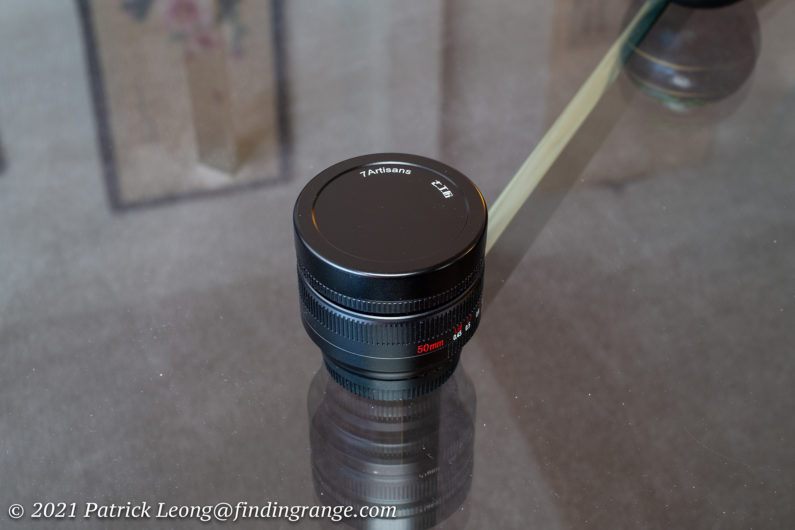
↑ The lens cap is metal and felt lined inside.
The dimensions are 2.7 x 2.4″/67.5 x 60.2 mm, while the weight is 14.8 oz/420 g, which means this is something that isn’t necessarily just a specialized lens where you would take out for only certain scenarios. It’s something that can be used even as an everyday lens. It’s not so heavy that you can’t carry it around with you all day, and it’s still compact enough where it can be discreet for street shooting, for example. The 7artisans 50mm f0.95 is also great for candid portrait work, which I imagine many will use it for, since that f0.95 has such a great ability to blur out that background in an image. It’s not something that will be intimidating. The person you’re photographing won’t just see all glass staring back at them.
7artisans Photoelectric 50mm f0.95 Lens Focusing:
In terms of focusing, it’s all done manually, which is probably another reason why the lens is more compact. Manually focusing a normal to short-tele lens with such a large maximum aperture is either something you enjoy or don’t. I’ve shot enough Leica M gear that I’m not so much of a fan anymore haha but focusing isn’t too difficult with the 7artisans Photoelectric 50mm f0.95 lens.
For one, the focus throw is shorter rather than longer, so it’s something that can sometimes be quicker to focus. For me, this is particularly important because as a boudoir and street fashion photographer, I like to capture a more spontaneous moment, and that will be more difficult, if I’m taking my sweet old time trying to focus a lens. Also, this means I can use this lens for more general purpose photography like street work, for example. As I said before, instead of this lens being used only for specific moments, it can serve as a lens I would use for “normal” shooting as well.
What also aids in focusing is the technology we have in most mirrorless cameras these days. For instance, I was using focus peaking, and the magnification features in my X-T3. I either used both features together or separately depending on my situation, and type of subject. I’ll admit it, focusing the 50mm f0.95 still isn’t as fast as autofocus, and I did get some out of focus shots but overall, this lens isn’t as difficult to focus as some might think, especially with practice.
7artisans Photoelectric 50mm f0.95 Lens Image Quality:
Quick note about the images: Covid cases are very high in NYC now, so I’ve been keeping my picture taking down to a minimum. There are less pics (and variety) than what I would normally post for a review. Also, I canceled my shoots, so no portraits with this lens. Still, there are plenty of pics that will show what this lens can do.
Now that we’ve talked about the overall build and focusing, let’s take a closer look at the image quality that this lens produces. The 50mm f0.95’s image quality is impressive, and it really does offer such a beautiful look, especially at f0.95. It’s pretty amazing to me that this lens costs only $236.

↑ Here’s a photo taken with f5.6 and 640 ISO.

↑ This was taken using f8 and 1250 ISO.
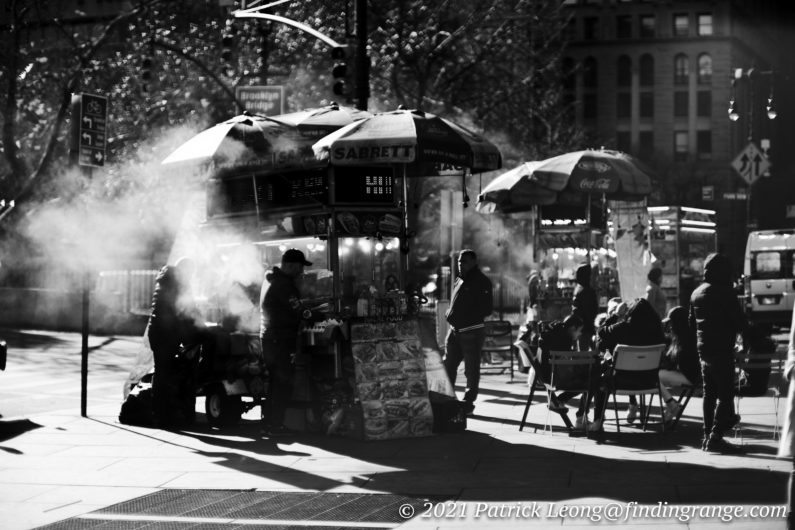
↑ Here’s a photo taken with f0.95 and 160 ISO.
For one, this is definitely a sharp lens. Even at f0.95, you can produce images that are very sharp, especially in the center. I think it comes down to the ability to focus, which can take a bit of practice at first. Once you get used to the 7artisans Photoelectric 50mm f0.95 lens though, you can get great results at f0.95. At f0.95, corners are a bit softer, which isn’t out of the ordinary. As you stop down, the entire image sharpens up nicely with even the center showing improvement. Corners get much better, and by just f2 to f2.8, the entire frame is nearly sharp. I found this lens does perform great throughout the aperture range, so it’s definitely something that you can use for all types of photography. Combined with its relatively compact size, and it’s overall image quality, this one lens could be the only 75mm equivalent that you need. In other words, you wouldn’t need to buy an additional 75mm just for the sake of having one smaller or one that would perhaps, perform better when stopped down.

↑ This was taken with f8 and 160 ISO.

↑ Here’s a 100% crop of the photo above.
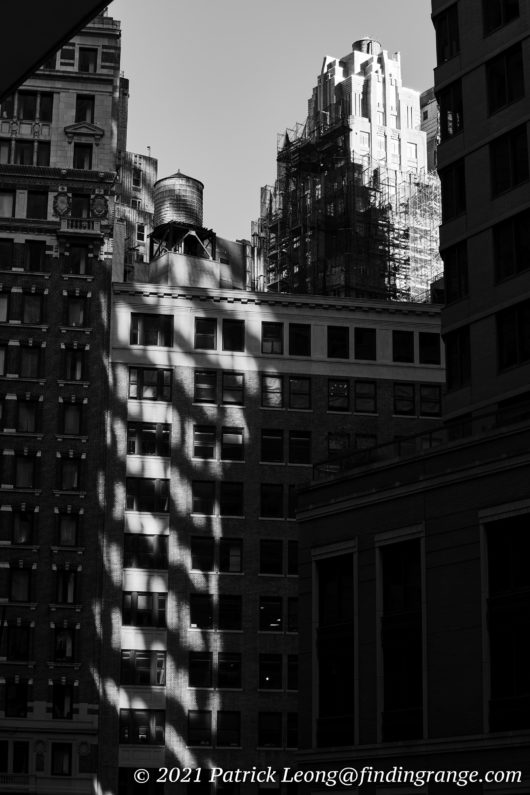
↑ Here’s another photo taken with f8. 200 ISO was used.
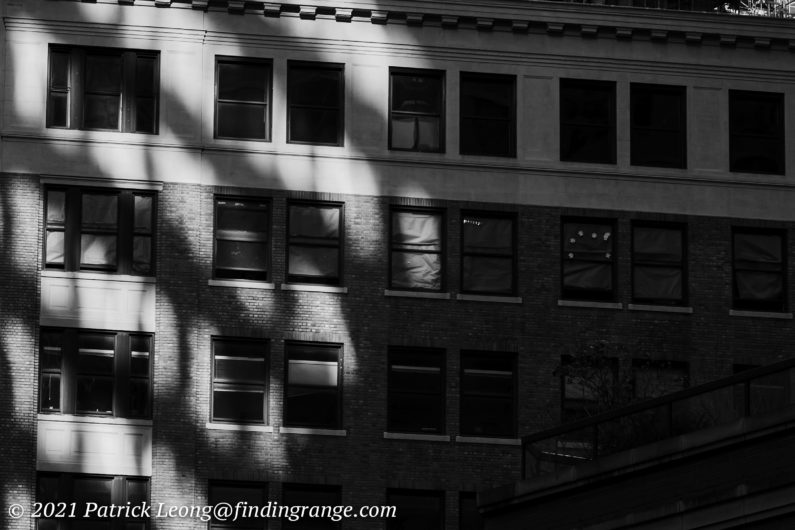
↑ Here’s a 100% crop of the photo above.
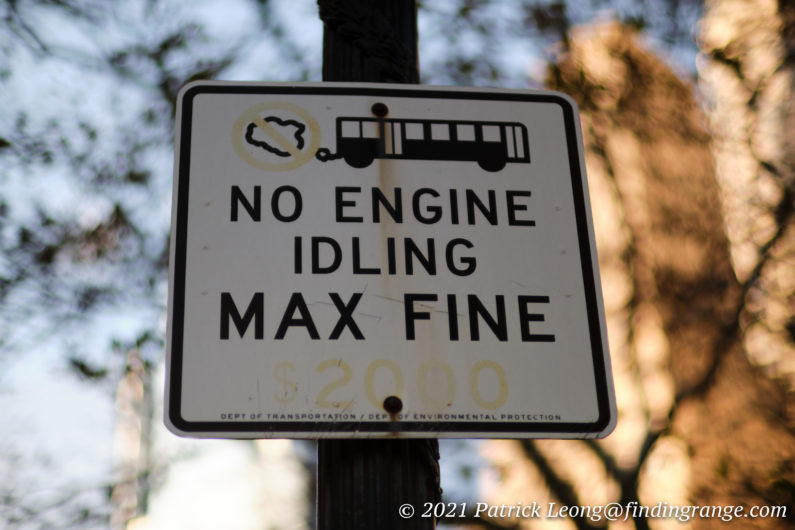
↑ This was taken using f0.95 and 160 ISO.

↑ Here’s a 100% crop of the photo above.
In addition to producing sharp images, there are other features that make the 7artisans Photoelectric 50mm f0.95 lens worth a look. Color and contrast are great. Flare wasn’t an issue for me under normal shooting conditions, so the fact that a lens hood was not included, is okay. There is some vignetting at wide open aperture but this is pretty much a given, and nothing out of the ordinary. The vignetting is actually kind of nice to be honest, and goes with the ultra thin depth of field look but if you’re not a fan, stopping down just one stop does reduce it significantly. Overall, this is a quality lens, in my opinion, and one that I think is comparable in terms of image quality to what is coming out from Fujifilm lenses. This is important, especially if you already own Fujifilm lenses, and want your images to match in terms of workflow.

↑ I took this using f8 and 160 ISO.

↑ I missed focus here but I thought the shot was kind of cool with the lighting and shadows. This was taken using f0.95 and 160 ISO.
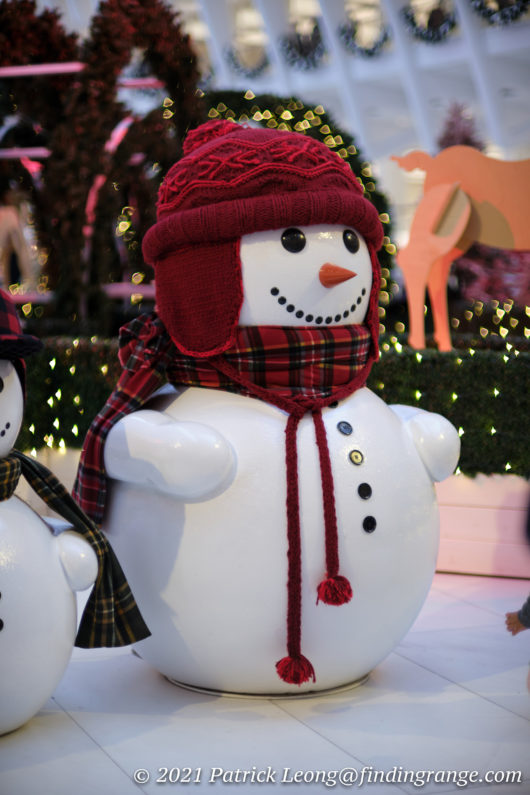
↑ This is another photo I took with f0.95 and 160 ISO.
7artisans Photoelectric 50mm f0.95 Lens Bokeh:
For those who are thinking of buying this lens for the bokeh, I think you will be very happy with it. The depth of field is very shallow at f0.95, and the bokeh quality is some of the nicest that I’ve seen for a lens with the Fujifilm mount. With its 13 blade diaphragm, the 7artisans Photoelectric 50mm f0.95 Lens produces stunning, and buttery smooth bokeh. I was suppose to have some portrait shots in this review but my shoots were canceled, due to the sudden rise in Covid cases, so I wasn’t able to test this lens with a model. However, if you do get a chance to test this lens with someone, I am sure you will be very happy with the results. The background simply melts away in a beautiful blur with nothing harsh, in my opinion. As I said before, it is seriously hard to imagine this lens costs less than $300! In my opinion, it’s a steal just for the bokeh alone!
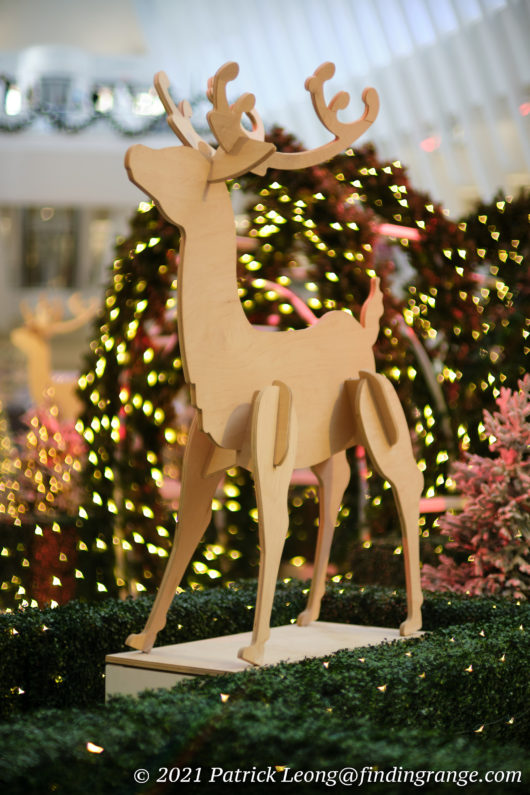
↑ This was taken with f0.95 and 160 ISO.
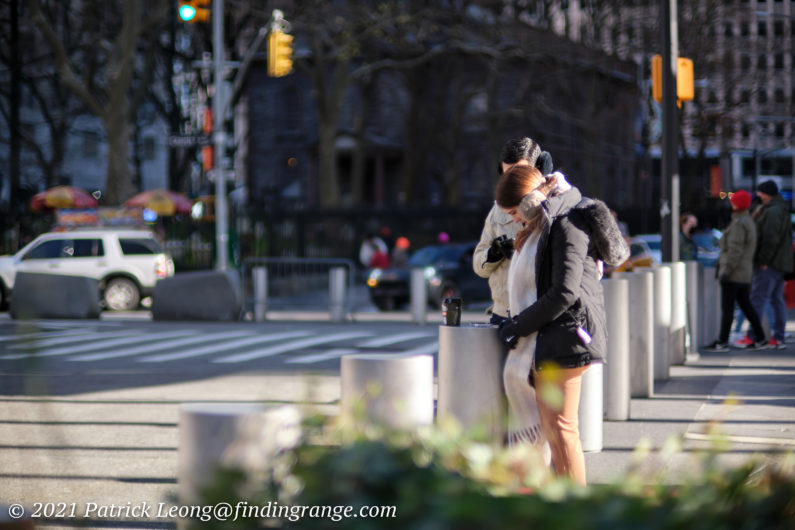
↑ This was taken with the same settings as above.

↑ Here’s another with the same settings as above.
Pros And Cons:
Pros:
- Solid build.
- All metal.
- Smooth focus ring.
- Shorter focus throw makes it easier to use this lens for general photography as well.
- Great image quality.
- f0.95 adds flexibility to what you can shoot.
- Beautiful bokeh.
- Great price.
Cons:
- Wish there was a clicking aperture ring.
- A lens hood would be nice but it isn’t a requirement.
Verdict:
If you ask me, the 7artisans Photoelectric 50mm f0.95 Lens is something that you should definitely take a closer look at, if you’re in the market for fast glass for your Fujifilm camera. The build is rock solid, the features like the focus ring are ultra smooth, and optically, it’s great. Plus, that f0.95 is going to give you a truly unique look. The best part is the Photoelectric 50mm f0.95 costs just $236. While it does not have autofocus, the retail price is even cheaper than Fujifilm’s own XF 50mm f2 lens, and therefore, it really isn’t much to invest in to even give it a try when you consider how much ultra fast lenses can cost these days.

↑ Here’s a photo I took using f0.95 and 160 ISO.

↑ This was taken using f8 and 160 ISO.
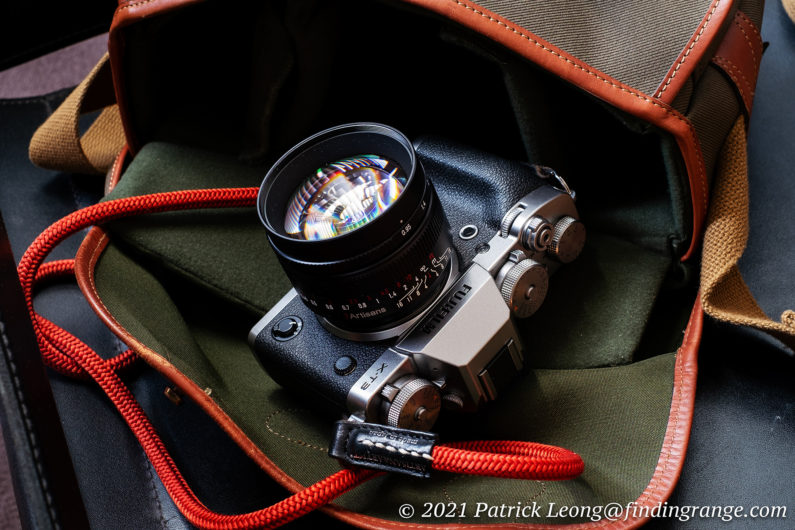
↑ Here’s one last photo with the 7artisans Photoelectric 50mm f0.95 attached to the Fujifilm X-T3.
This is truly another great third party lens to come out for the Fujifilm system, and I highly recommend it. I think it’s really worth it, and it will give you a lot of bang for the buck. In my opinion, this should definitely be added to the short list of lenses to buy.
Thanks for taking the time to read my review! If you’re considering purchasing the Photoelectric 50mm f0.95, and my review helped you decide, please help support this site by purchasing from the links below or any mentioned in this review. It will not cost you anything extra. Thank you for your support!

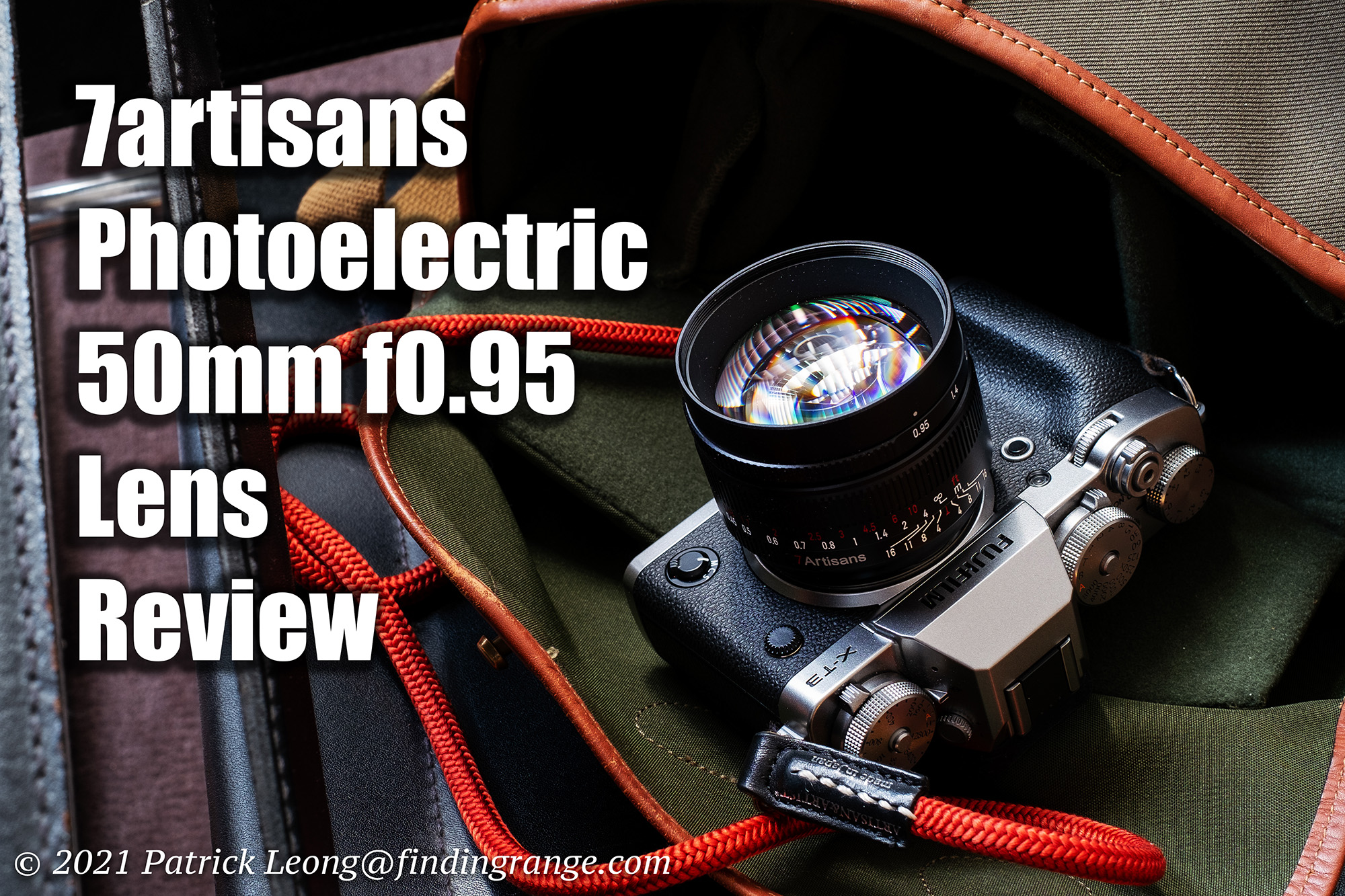
Hey, Patrick!
First, thanks for taking time to review the 7artisans lenses. It’s hard to find good reviews, and yours are esecialy helpful because you provide high-res versions of the samples in the article.
Now something the review made me think of. I’ve read some of the review of the M version of the 50mm (say at phillipreeve). The off center sharpness wasn’t all that great. So, what I wondered was whether the APS-C crop factor kind of cropped out the weaker areas? If so, that’s a great argument for using this kind of lens on, say, my X-E3.
Whacha think?
BTW sorry to hear your professional work is suffering because of omicron. I managed to get in a final cut from my stlist of 35 years, but obviously your clients can’t be masked for the kibd of effect they want!
Hi Kathy!
So sorry for the late reply! I hope you’re doing good! Thanks for reading my review. It means a lot, and it’s great to hear from you!
As for your question, I wouldn’t be surprised if some of the weaker areas were cropped off a bit because of the APS-C crop factor. It happens with a lot of lens designs for APS-C nowadays. But I feel that when I’m shooting wide open with a lens like this one, having the corners being a bit weaker is okay. I don’t really notice it as much I guess because of the blurred out background, unless I am looking for the issue.
Thanks for your kind words about my professional work. I do remote shoots occasionally now though. Have I told you about these before? I meet up with a model online from around the world, and thanks to modern technology, I can control her camera through my computer with the camera app or Capture One. We use something like Zoom to chat. Some of these models use professional setups (pro cameras, lighting, studio booking, etc.), so the results are just as good as you would get from in-person shooting. It’s been a great experience. The process is slower but the results can be excellent. Plus, it’s a great way to network, and shoot in various locations around the world.
Again, it’s great to hear from you! Apologies for the late reply!
Best,
Patrick
Apologies in return — I’ve been AWOL here —I retired, then we moved from Austin TX to Bellingham, Washington State. In the middle of a nature preserve — nature a different photography for me 🙂 I thought I’d even sell my M system, but the very nice guy at the Leica store persuaded me I could do just as nice work with an M. Also I walked out with Leica binoculars, which are spectacular.
I think I understand your point about corner sharpness for lenses like these— let’s see if I got this right. Say you’re using this wide open to get a portrait. Corner sharpness might even be a distraction from the effect you’re trying to get?
Good to hear you can still get work done with your models. funny story — there’s a hotel we’ve stayed at for years. Friends with all the staff, including a flamboyant woman in reception. Turns out she does theater burlesque — competitive, no less, and it has to be G-rated. With COVID shutting down all kinds of theater, I think I’ll suggest she use remote too, and set up the contests online.
Hi Kathy!
I remember you mentioning moving to Washington State. How is it there? I’m glad the guy persuaded you to keep the M system :). It’s worth it, and yes, you can get some great nature stuff with it. Leica Binoculars are fantastic. I own a pair for concerts lol.
As for corner sharpness, if you’re shooting a portrait at wide open aperture, chances are, you’re trying to isolate the subject anyway, so I don’t think a little softness in the corners will be a problem. Of course, this is just my opinion :). Yes, it might even be somewhat of a distraction to have something ultra sharp. Plus, most lenses at large open aperture have some vignetting, which helps further isolate the subject.
The burlesque performer should definitely try remote. It is pretty incredible what you can do these days remotely. I have posted some recent remote work on my Instagram. You can see that the quality is the same as what I would get during an in-person shoot because we’re using the same pro-grade cameras :). In some ways, I actually prefer remote shooting over in-person haha. One reason is because I feel that both parties has more of a say, so it’s more collaborative. In a remote shoot, great, not good, communication is key. Without it, the pics just come out bad no matter the gear or/and photography knowledge. There’s a lot of back and forth before the shoot. There’s a lot during the shoot as well.
I can imagine the Leica binocs in concerts; the light-gathering properties are incredible. Just like the M lenses: microcontrast as well.
Thinking about remote: it might be fun for all us finding-range-fans to see a review of some remote equipment. Could be eye-opening!
Cheers,
Kathy
Yes, the binoculars are amazing. I found out Leica also makes monoculars too :).
I actually was thinking about an article on remote shooting but I don’t think I have enough knowledge to write one haha. I just turn on Zoom haha. Still, maybe I can think of something :).
Are you interested in trying a remote shoot? You should…it’s a great experience. I can recommend someone if you want.
Best,
Patrick
I bought this lens just a few days ago. It is substantial and the bokeh is very nice, but there is a major problem with it: It isn’t actually an f/0.95 lens.
The first time I used it, I was surprised when I noticed that the meter on my Nikon Z30 didn’t show any increase in light coming through the lens as I opened the aperture beyond f/1.4. Mystified, I took a closer look at the aperture through the lens and noticed that around f/1.3 or so, as I turned the aperture ring towards f/0.95, the iris exposes a fixed metal aperture directly behind it that effectively keeps the aperture from getting any faster even though the iris continues to open.
To verify this, I checked the lens against two Nikon 50mm f/1.8 lenses I own, which I mounted on my Z30 using a Nikon FTZ II adapter. One was an AF-D and the other was an AF-S lens. Aiming at the exact same scene (a wall in my house) at that distance in the same light using the same ISO with all three lenses, I got three very similar histograms. I took the photos at f/2 with the Nikon lenses and with the aperture set at f/0.95 with the 7Artisans lens.
The results verified what I had observed. f/0.95 should be 2.1 stops faster than f/2. The AF-D lens shot the scene at f/2 @ 1/50 second. The AF-S lens shot it at f/2 @ 1/40, producing a slightly brighter histogram. At f/2 the two lenses were about 1/4 stop apart from each other. Given this result, at f/0.95, the 7Artisans lens should have used a shutter speed around 1/200. In fact, the shutter speed from the 7Artisans lens was 1/100, producing almost exactly the same histogram as the AF-D lens. This meant that the 7Artisans lens at its maximum aperture was effectively only one stop faster than the AF-D lens, which would be about f/1.4.
To be perfectly frank, I feel cheated by this. I already own a f/1.2 Canon rangefinder lens that I can mount with an adapter. I also already own an Nikon f-mount f/1.4 lens. My main reason for buying the 7Artisans lens was to get that extra stop and the extra bokeh that comes with it.